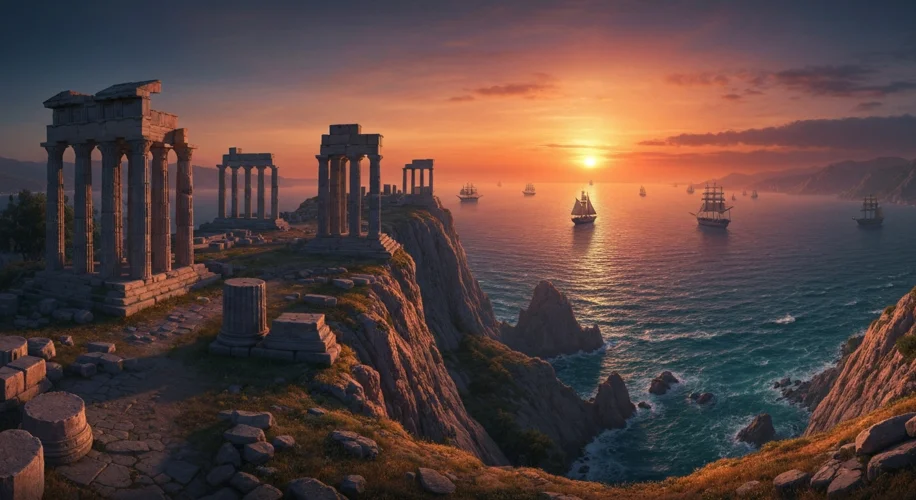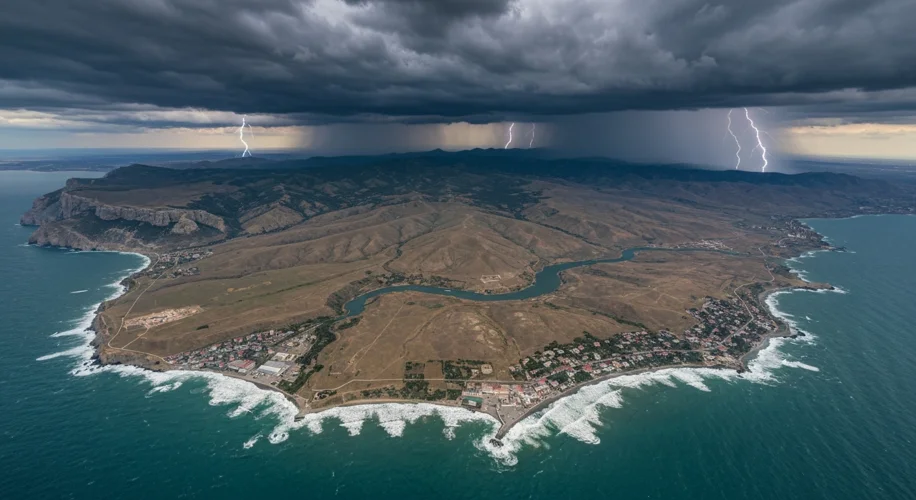Nestled between the Black Sea and the Sea of Azov, the Crimean Peninsula is a land of stark beauty and enduring strategic significance. Its sun-drenched coastlines, fertile steppes, and vital port cities have, for millennia, made it a prize coveted by empires and a crossroads of cultures. Yet, beneath this picturesque surface lies a tumultuous history, a narrative etched in the blood and tears of countless peoples who have vied for its control.
From the dawn of civilization, Crimea, known to the ancient Greeks as Tauris, was a strategic nexus. Its natural harbors offered access to the vast expanses of the Black Sea, a gateway for trade and conquest. Early inhabitants, such as the Taurians and Cimmerians, left their mark, but it was the arrival of Greek colonists around the 7th century BCE that truly began to shape the peninsula’s destiny. Cities like Chersonesus, Pantikapaion (modern Kerch), and Theodosia flourished, becoming centers of Hellenistic culture and commerce.

The allure of Crimea didn’t wane with the decline of Greek city-states. The Roman Empire recognized its strategic value, establishing a strong presence to protect its northern trade routes. Later, the Byzantine Empire, the successor to Rome in the East, maintained a significant influence, with Chersonesus serving as a crucial outpost. The waves of migration and conquest continued, with waves of Goths, Huns, Bulgars, and Khazars sweeping across the region, each leaving their indelible imprint on the land and its people.
One of the most transformative periods in Crimean history began with the arrival of Turkic peoples. The Kipchaks, and later the Tatars, became dominant, eventually forming the Crimean Khanate in the 15th century. For over three centuries, this powerful khanate, a vassal state of the Ottoman Empire, stood as a formidable force, its skilled cavalry a constant threat to its neighbors, particularly the rising power of Muscovy (later Russia). The Crimean Tatars, with their distinct culture and Islamic faith, became intrinsically linked to the peninsula, their history a vibrant thread in its complex tapestry.
The relentless expansion of the Russian Empire under Catherine the Great eventually brought Crimea into its orbit. In 1783, Russia formally annexed the peninsula, a move that would set the stage for centuries of geopolitical tension. The fertile lands and strategic ports were a massive boon for the burgeoning Russian Empire, providing access to warm-water ports crucial for its naval ambitions. This annexation, however, also marked the beginning of a long and painful displacement for the Crimean Tatar population, a historical trauma that echoes to this day.
Russia’s newfound control over Crimea immediately put it on a collision course with other European powers. The Crimean War (1853-1856) was a brutal conflict fought largely on Crimean soil, pitting Russia against an alliance of the Ottoman Empire, France, Britain, and Sardinia. The war, a bloody testament to the peninsula’s strategic importance, resulted in a Russian defeat and highlighted the modernization gap between Russia and Western Europe. It also led to further emigration of Crimean Tatars.
The 20th century proved to be an even more brutal chapter for Crimea. Following the Russian Revolution, the peninsula became a battleground during the Russian Civil War, changing hands multiple times. Under Soviet rule, Crimea was initially part of the Russian SFSR before being transferred to the Ukrainian SSR in 1954, a decision made by Nikita Khrushchev that would have profound and lasting consequences. During World War II, Crimea suffered immensely, becoming a key theater of operations for the Eastern Front and enduring brutal Nazi occupation. The post-war Soviet era saw the tragic forced deportation of the entire Crimean Tatar population in 1944, accused en masse of collaboration with the Nazis. This act of ethnic cleansing left an indelible scar on the peninsula and its people, with many dying during the brutal journey and in the desolate lands of Central Asia to which they were exiled.
With the dissolution of the Soviet Union in 1991, Crimea found itself within the newly independent Ukraine. However, its complex demographics, with a significant ethnic Russian majority alongside the returning Crimean Tatars and a Ukrainian minority, created a fertile ground for political instability and competing national aspirations. Russia, still viewing Crimea through a historical lens of imperial dominance, never fully relinquished its psychological claim.
The strategic importance of Crimea, particularly its Black Sea ports, remained paramount. Sevastopol, a city with deep historical ties to the Russian Navy, served as the home base for Russia’s Black Sea Fleet under a lease agreement with Ukraine. This arrangement was a constant point of contention, a geopolitical tightrope walk that finally snapped in 2014.
Following the Ukrainian Revolution of Dignity, which saw the ousting of pro-Russian President Viktor Yanukovych, Russia swiftly moved to annex Crimea. Citing the need to protect ethnic Russians and a historical claim, Russian forces, some of them unmarked ‘little green men,’ seized key infrastructure. A hastily organized and internationally disputed referendum followed, leading to Russia’s formal annexation of the peninsula. This act triggered widespread international condemnation, sanctions against Russia, and a new phase of heightened tension in Eastern Europe.
The consequences of the 2014 annexation were profound. It destabilized the region, fueled a broader conflict in Eastern Ukraine, and fundamentally altered the geopolitical landscape. For the Crimean Tatars, it brought a new wave of fear and repression, as their cultural and political rights faced renewed challenges. For Ukraine, it represented a devastating loss of territory and a stark reminder of the enduring struggle for sovereignty.
Today, in 2025, the Crimean Peninsula remains a potent symbol of historical grievances, geopolitical ambition, and the enduring human desire for self-determination. Its deep waters hold the echoes of empires, the whispers of forgotten peoples, and the unresolved questions of a land caught in the crosscurrents of history. The struggle for control over this strategically vital land is not merely a modern political event; it is the latest chapter in a story that has been unfolding for thousands of years, a story of conflict, resilience, and the unyielding pull of a peninsula that has shaped and been shaped by the tides of history.
Categories: World History, European History, Geopolitics
Tags: Crimea, Black Sea, Geopolitics, Russian Empire
SEO Title: Crimea: A Peninsula of Conflict and Control Through the Ages
SEO Focus Keyphrase: Crimean Peninsula history
SEO Meta Description: Explore the deep and turbulent history of the Crimean Peninsula, from ancient civilizations to modern geopolitical conflicts, and its strategic importance.

